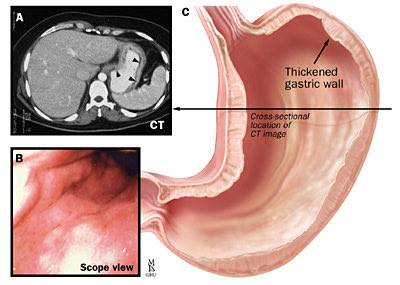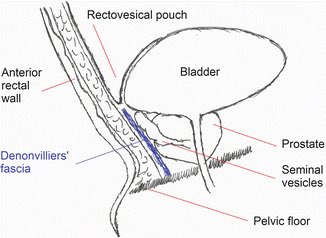Finally, he also invented the Pirogov amputation in 1854. This was a technique of foot amputation in which the heel is preserved and used as a base. The patient is able to bear full weight on the limb with minimal loss of leg length.
English obstetrician James Blundell (1790-1878) performed the first successful transfusion of human blood in 1825, drawing blood from the husband with a syringe and transfusing it into his wife, to treat post-partum hemorrhage! To avoid clotting, he invented the ‘Gravitator’.
The name ‘linitis plastica’ was first used to describe a thickened, rigid stomach in 1854 by English physician William Brinton. Linitis (inflamed fibrous tissue) and plastica (inelastic). Also called ‘leather bottle’ stomach, we now know this is from diffuse gastric cancer.
English surgeon Sir William Bowman (1816-1892) identified numerous microscopic structures, invented lacrimal probes, joined the Royal London Ophthalmic Hospital, and founded the Ophthalmological Society of the United Kingdom (now the Royal College of Ophthalmologists).
The 1937 painting ‘surgery’ was done by Irish-born South African artist Dorothy Kay. Depicting a cholecystectomy, the focus is on the anesthesiologist and his equipment. The artist added herself to the scene. She is the ‘scrub sister’ on the right.
American neurosurgeon Peter Jannetta (1932-2016) was dissecting cranial nerves in the lab when he noticed a blood vessel pressing on a nerve. This led to a microvascular decompression operation for the treatment of trigeminal neuralgia and other vascular compression syndromes!
Swiss surgeon Fritz de Quervain (1868-1940) described chronic thumb tendon inflammation (de Quervain’s disease) and its operative treatment, identified a type of thyroid disease (de Quervain’s thyroiditis), and is credited with introducing iodized table salt!
Ludwig’s angina, described in 1836 by German physician Wilhelm Friedrich von Ludwig, is an infection of the floor of the mouth. It can block the airway, requiring surgical intervention. The name ‘angina’ comes from the Greek ‘ankhone’ which means ‘a strangling’.
John Knowsley Thornton (1845-1904) was a Scottish surgeon and the first to perform an adrenalectomy, in 1889. His patient was a 35 year old woman with hirsutism. The operation was a success (the tumour weighed 20 lbs!) but the patient died 2 years later due to recurrence.
The fascia that separates the prostate and bladder from the rectum was described in 1836 by French surgeon and anatomist Charles-Pierre Denonvilliers (1808-1872). It’s an important structure in prostate and rectal cancer surgery. He also described the puboprostatic ligaments.




























